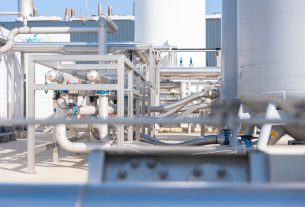United States – The U.S. DOE has provided more than $30 million in federal funding, matched by more than $35 million in private sector funding, for 68 projects aimed at accelerating the commercialization of promising energy technologies.
The energy technologies range from clean energy and advanced manufacturing to building efficiency and next-generation materials. These awards will help deploy innovative solutions from DOE’s National Labs into the marketplace helping to create new jobs and businesses, while increasing the nation’s economic competitiveness and attaining President Biden’s goal of net-zero carbon emissions by 2050.
TCG aids new projects
Today’s awards are facilitated by the DOE Office of Technology Transitions (OTT) Technology Commercialization Fund (TCF). The TCF was created by the Energy Policy Act of 2005 to help catalyze the agency’s research, development, demonstration, and deployment efforts into affordable, market-ready energy solutions, by strengthening partnerships between DOE’s National Labs and American entrepreneurs.
To date, the TCF has funded more than 380 projects by unlocking more than $170 million in funding from more than 300 private sector partners, including automotive manufacturers, energy storage companies, utilities, bioenergy companies, solar providers, and aerospace companies. To receive a TCF award, National Lab teams must receive a commitment from private sector partners to match at least 50% of the anticipated federal funding.
Selected projects
This year’s selected TCF projects represent 12 DOE National Labs across the nation, supported by partners in 25 states and four countries, including:
- Ames Laboratory—$343,500 in federal funds cost-shared by partners in Pennsylvania and New York. Projects include an alternative for supply-dependent critical rare earth magnets and an energy-efficient process for coatings used in high energy efficiency gas turbines.
- Argonne National Laboratory—$4,150,000 in federal funds, cost-shared by partners in Wisconsin, California, Pennsylvania, Texas, Virginia, Kentucky, Illinois, and Indiana. Projects include processing materials for energy storage, highly-efficient processes to convert carbon dioxide to chemicals, advanced materials processing to produce fast reactor fuel alloys, and industrial simulation improvements.
- Idaho National Laboratory—$1,175,000 in federal funds, cost-shared by partners in Arizona and Idaho. Projects include new alloy anodes for electrochemical production of advanced materials, modeling to improve the resilience and reliability of the United States’ power grid, and a hardware-software appliance to ensure secure wireless communications in a power generation facility.
- Lawrence Berkeley National Laboratory—$2,029,599 in federal funds, cost-shared by partners in Massachusetts, Ohio and Connecticut. Projects include a detector for the identification of fissionable materials, sustainable aviation fuel, and reducing the water requirement of hydrogen production.
- Lawrence Livermore National Laboratory—$3,130,000 in federal funds, cost-shared by partners in California. Projects include carbon capture improvements, a technology to improve the reliability of the metal additive manufacturing process, improvements to Lidar, and converting biogas to sellable products.
- Los Alamos National Laboratory—$4,724,659 in federal funds, cost-shared by partners in California, Maryland, and Massachusetts. Projects include the remote monitoring of power transmission lines, an innovative manufacturing technology for carbon-carbon composites, an innovative approach to renewable hydrogen production, and machine learning of natural and engineered geoscience processes.
- National Energy Technology Laboratory—$150,000 in federal funds cost-shared by a partner in Oklahoma. The project focuses on chemical conversions.
- National Renewable Energy Laboratory—$5,044,337 in federal funds, cost-shared by partners in California, Florida, New York, Minnesota, Wisconsin, Delaware, Virginia, and North Carolina. Projects include thin films for solar modules, hybrid power plants, bioproducts, offshore wind turbines, electric aviation systems, grid resilience, super insulation, wind power plants, hydrogen-based power plant support, energy-efficient heating, ventilation and air conditioning systems, distributed energy resources management, bio-based insecticides, and CO2 waste gas scrubbing processes.
- Oak Ridge National Laboratory—$5,126,689 in federal funds, cost-shared by partners in Tennessee, New York, Minnesota, and North Carolina. Projects include converters for extreme fast charging, artificial intelligence for characterizing additive manufacturing and others.
- Pacific Northwest National Laboratory—$4,819,579 in federal funds, cost-shared by partners in Texas, Quebec, New York, Illinois, Oklahoma, Ontario, Washington, Louisiana, Colorado, Pennsylvania, Indiana, and California. Projects include self-healing cements for subsurface application, cybersecurity applications for control rooms, and optimization of hydropower and marine hydrokinetic facilities.
- Sandia National Laboratories—$2,092,523 in federal funds, cost-shared by partners in Massachusetts, Michigan, New York, Cleveland (UK), and New Mexico. Projects include alkaline water electrolysis, improved power converters for microgrids, and robotics for the optimization of wind energy generation.
- SLAC National Accelerator Laboratory—$115,000 in federal funds. Project involves development of transactive energy service systems.




